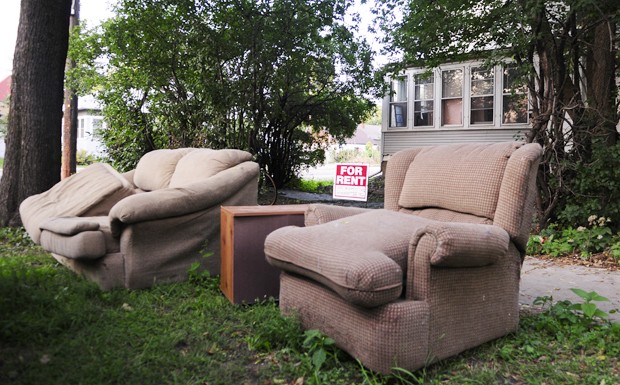Heaps of trash illegally dumped onto sidewalks and front lawns could be seen in the Southeast Como neighborhood as residence turnover rates reached their highest numbers last week. Items included food, furniture, paint cans and electronics. The Southeast Como Improvement Association (SECIA) launched its Solid Waste Reduction and Reuse Project last week to find out why garbage is accumulating and how to facilitate its reuse. SECIA was awarded the 2009 Environmental Assistance Grant âÄî a total of $25,000 in funds over a two year period âÄî by the Minnesota Pollution Control Agency to fund its community-wide recycling program. Grants are awarded each year for projects that focus on pollution prevention, recycling, environmental education and sustainable development. Southeast Como environmental coordinator Justin Eibenholzl said the grant was competitive and only five out of 59 local organizations won the award. Preliminary steps of the project include surveys, outreach to University of Minnesota tenants and encouraging Como residents to report illegal dumping. An organized system to store, reuse or recycle items will be established. Eibenholzl said reusable items may be donated to charities. Educating the neighborhood about how to recycle is another top priority, which he said should also be a priority for the University. As well as being a fire hazard and a threat to the environment, Eibenholzl said the garbage is aesthetically displeasing. He also said trash dumping has been increasing in the past four years. Although garbage collectors come weekly, Eibenholzl said extra trash does not get picked up quickly and there are delays. Minnesota Pollution Control Agency spokesman Walker Smith said the garbage can be dangerous because heavy metals from electronics can get washed into storm sewers, polluting rivers and lakes. Heavy metals can also degrade air quality. âÄúItâÄôs too bad because in Minneapolis, the [trash] should be picked up by garbage services,âÄù Smith said. Minneapolis Solid Waste and Recycling Services Coordinator Angela Brenny said the city has an accelerated cleanup program in the University area during mass move-out periods. The city does not know the whereabouts of extra garbage unless a resident reports it, she said. Brenny also said notifications are sent to property owners and residents about a fine if garbage is found by a residentâÄôs house after pickup time. She said she thinks the city is doing enough and that landlords need to make tenants aware of pickup times. New 17th Avenue resident Emily Petersen said she thinks the garbage is âÄúridiculous.âÄù Her roommates were fined $200 because of trash she said a neighbor left on their front lawn. Trash can also attract raccoons which she said are a nuisance. Senior Bess Rubin lives on Talmadge Avenue and said the worst polluters are dump trucks because trash flies out of them as they pass by. She also cleaned her front lawn for garbage that was not hers. Marcy-Holmes Neighborhood Association director Melissa Bean said illegal garbage dumping is not a problem in the Marcy-Holmes neighborhood because âÄúthe city takes care of it.âÄù Prospect Park East River Road Improvement Association President Dick Poppele said his neighborhood doesnâÄôt share ComoâÄôs problem because residents in the area are mostly long-term or graduate students.











